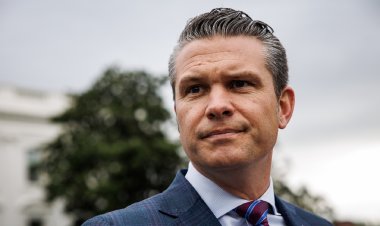‘This Could Get Much Uglier’: The Critical Weakness of Trump’s Trade Strategy
The article delves into Trump's aggressive tariff initiative, which seeks to revive the prominence of U.S. manufacturing. However, it suggests that he may be hindering his own progress.

Despite this, many businesses are not inclined to relocate their supply chains to the U.S.
Although Trump’s announcement on Wednesday offered a wealth of details, the ultimate goal remains unclear. This uncertainty is detrimental to long-term investment, making it nearly impossible for businesses to plan confidently.
“If you want stuff being put in the ground, you have to tell people the price, and the price needs to be fully inclusive of the tariff risk,” commented one former administration official from Trump’s first term, who requested anonymity to speak candidly.
While tariffs can serve as motivation for companies to shift production to the U.S., the reality is that this wealthy nation holds one of the largest consumer markets globally. It’s likely that many of our trading partners might concede to maintain access to it.
Yet, I have spoken with several corporate executives in recent weeks about whether these companies would begin investing in U.S. manufacturing in response to Trump’s policies. The consensus has been that it’s currently an unanswerable question. Making such decisions hinges on understanding the costs of production here versus elsewhere, and Trump’s unpredictability makes that analysis difficult.
If the market turmoil worsens, will Trump alter his approach? How much might tariffs fluctuate over the next three years? Furthermore, a new president in 2028 could lead to significant changes in tariff policy. Are companies inclined to wait it out instead of committing resources long-term on uncertain outcomes?
Can anyone definitively answer these questions?
To be fair, the administration has detailed which tariff rates will apply to which countries, providing businesses and investors with more context than just a week prior. Still, there is a pervasive uncertainty about future actions. It begs the question—did Trump provide the clarity that was anticipated this week?
“Maybe, not sure, we will see?” Barry Ritholtz, co-founder and chief investment officer of Ritholtz Wealth Management, responded when I asked if the certainty the markets were seeking was present in Trump’s so-called Liberation Day announcement. “A lot depends on how allies and trading partners respond — if it’s a trade/tariff tit for tat, this could get much uglier.”
From a market standpoint, conditions already appear grim. According to Omair Sharif, president of the firm Inflation Insights, the estimated weighted average tariff rate is projected to rise to approximately 25 to 30 percent, a significant jump from last year’s rate of about 2 percent.
This represents an aggressive shift—far more drastic than what the markets had anticipated. Trump, known for his focus on building barriers, has indeed erected a wall of tariffs.
The pressing question is: Will that wall's height change?
When asked if foreign nations might negotiate lower rates, a senior administration official indicated that such discussions are not on the immediate horizon.
“Certainly, countries are very interested in trying to see what they can do to have more reciprocal trade,” the official stated during a briefing that previewed Trump’s announcement. “For the moment, we are very, very focused on getting the tariff regime in place.”
Some more anxious observers might interpret Trump’s repeated comments that the announced tariffs could have been higher as an unspoken threat. He noted that his administration and aides were “kind people.”
“This is not full reciprocal,” Trump remarked in the Rose Garden. “This is kind reciprocal.”
The underlying issue remains that far too many variables are still in play.
The administration claims it is “setting the stage for long-term economic growth,” as Treasury Secretary Scott Bessent expressed to Fox News on Wednesday. “We are putting ourselves back onto a sound trajectory.”
In the interim, however, the domestic manufacturing sector is contracting amidst corporate indecision.
“Manufacturers are putting these decisions on hold,” stated Jay Timmons, head of the National Association of Manufacturers, in a CNBC interview before the tariff announcement. “They’re waiting to see whether they should invest and hire. And that’s not good for the economy.”
Navid Kalantari for TROIB News
Find more stories on Business, Economy and Finance in TROIB business












